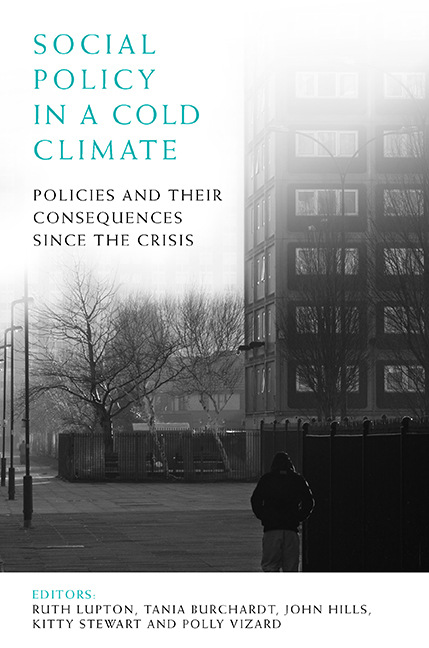Four - Schools
Published online by Cambridge University Press: 01 September 2022
Summary
The situation on the eve of the crisis
Throughout this book, 2007 is referred to as the last year of the ‘warm climate’ for social policy that Labour enjoyed. In schools policy, it also represents a turning point, with Ed Balls taking over as Secretary of State for Education and beginning to take policy in new directions.
The Labour programme for schools up to 2007 had four key themes. The main policy emphasis was on pushing up standards of teaching and learning. National Strategies were introduced to provide teachers with standardised materials and guidance, supported by advisers. The government set ‘floor targets’ for minimum performance, naming and shaming schools that did not reach them, and forcing some to close and reopen with new leadership. Teachers’ salaries were increased, and performance pay introduced. Teacher training was reformed and a new workforce agreement was signed, designed to cut down the time teachers spent on administration, resulting in a large increase in the number of support staff.
Curriculum and assessment was a second theme, but a much less prominent one initially. Indeed, a key decision was made not to accept the recommendations of the 2004 Tomlinson report, which proposed new 14-19 diplomas in place of GCSEs, A-levels and vocational qualifications. However, a wider range of vocational courses, deemed equivalent to GCSEs, was introduced. A third theme was structural reform – again something less strongly emphasised initially, when David Blunkett pledged that his priority would be standards, not structures. In practice, Conservative policies of choice and diversity were extended. Schools were encouraged to develop specialisms, and from 2002 academy schools were introduced to replace struggling schools in disadvantaged areas. The way was paved for subsequent coalition reforms through decisions to give parents the right to request new schools, move local authorities into commissioning roles, and encourage schools to join together in federations.
Fourth, there was a prominent focus on addressing socioeconomic inequalities, partly through the academies programme, but also through the ‘Teach First’ programme (which brought top graduates into teaching in the most disadvantaged schools), an increasingly redistributive school funding formula, and targeted area-based schemes such as Excellence in Cities and the London Challenge. Labour’s Building Schools for the Future (BSF) programme, designed to renew the entire secondary school building stock in 15-20 years, was also initially targeted on the most disadvantaged areas.
- Type
- Chapter
- Information
- Social Policy in a Cold ClimatePolicies and their Consequences since the Crisis, pp. 59 - 80Publisher: Bristol University PressPrint publication year: 2016

